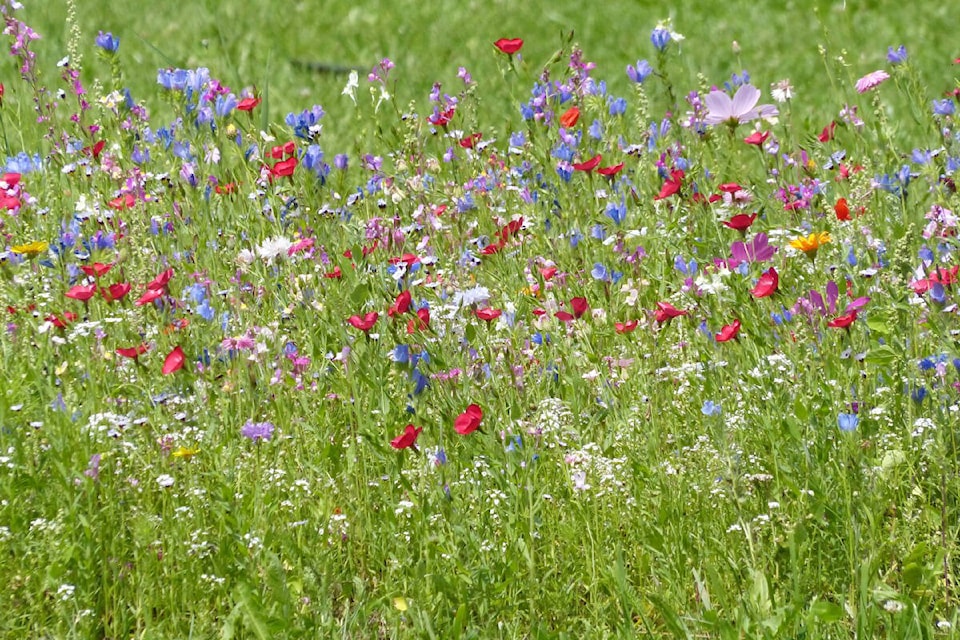By Dr. Catherine Tarasoff
We’ve all been there – charmed by the bountiful bouquet of colourful flowers on the seed packets on display this time of year. This is especially true if you have one of those “hard to plant” areas on your property. With packet descriptions like “easy to establish”, “prolific flower production”, and “low maintenance”, it’s hard not to think the wildflower seed mix will be a saviour for that dusty, rocky slope that is an eyesore year after year. However, there are many reasons to avoid wildflower seed mixes:
• They contain invasive plant species that are troublesome to our region. Plants such as baby’s breath (Glysophile spp.), batchelor buttons (Centaurea cyanus), blueweed (Echium vulgare), and common tansy (Tanacetum vulgare) are often found in seed mixes marketed as wildflower mixes.
• Most of the species in these mixes are not native to our region, let alone Canada. While there may be 15 species listed on the packet, only two or three are liable to survive in our climate.
• The seeds contained in the mixes are often uncertified, or “common”, meaning there is no screening for contamination of non-desirable plants, and the seed source may be uncertain or low quality.
• Purchasing seeds from local seed companies does not ensure the seeds are adapted to our region; seed companies can purchase in bulk and repackage for a local market.
Seed mixes are an important pathway of invasive plant introduction into our region. The most important, and easiest, strategy you can use to prevent the introduction of invasive plants is to “know what you grow”:
• Read the seed packet label. Cross reference the species list on the internet by searching the common or scientific name and “invasive”.
• Use PlantWise resources to select garden-suitable species that are non-invasive (https://bit.ly/3LIx2Ai/).
• Consider using native perennial plants over annual plants. Over time, perennial plants develop deep roots that prevent soil erosion, build soil health, and provide a foundation for a more complex garden environment that supports all levels of biodiversity.
Help keep our region free of invasive plants and be “Plant Wise”!
Dr. Catherine Tarasoff is the Education and Outreach Coordinator for the Thompson-Nicola Invasive Plant Management Committee (on Facebook at Thompson-Nicola Invasive Plant Management Committee). This season, articles are dedicated to “Stopping Invasive Plants Close to Home!” The series will provide tools and tips for preventing invasive species while enjoying the space around your house and property. Look for more resources at www.tnipmc.com.
editorial@accjournal.ca
Like us on Facebook and follow us on Twitter
